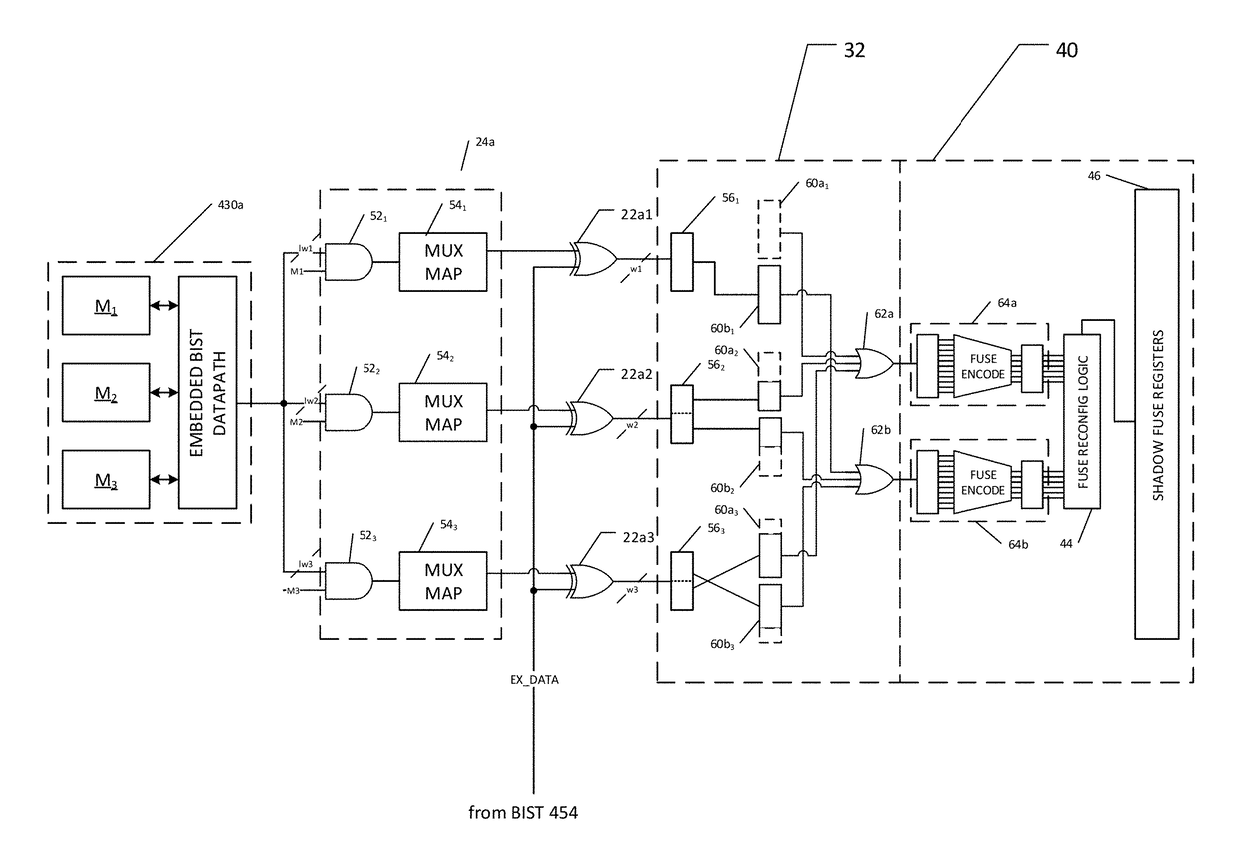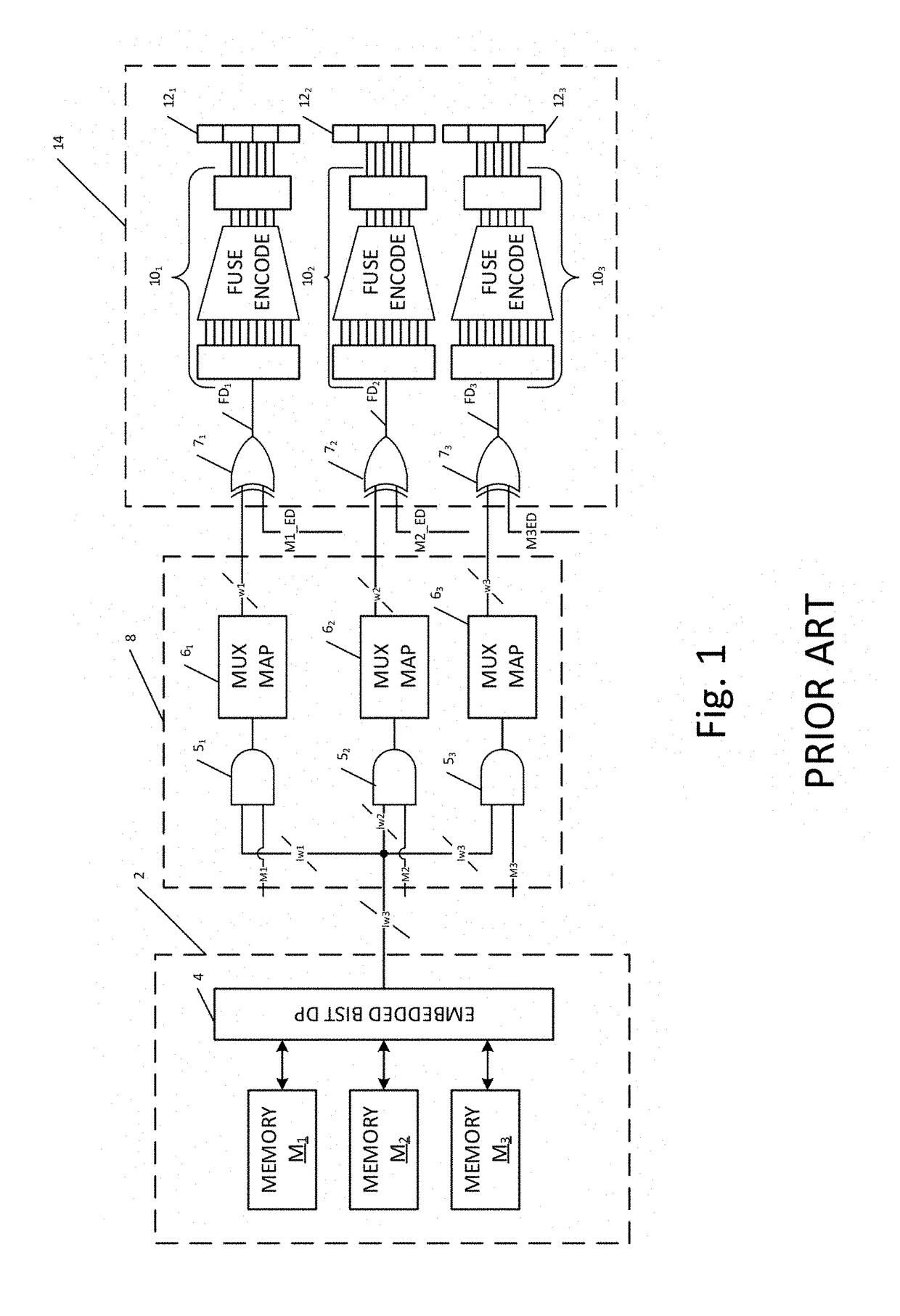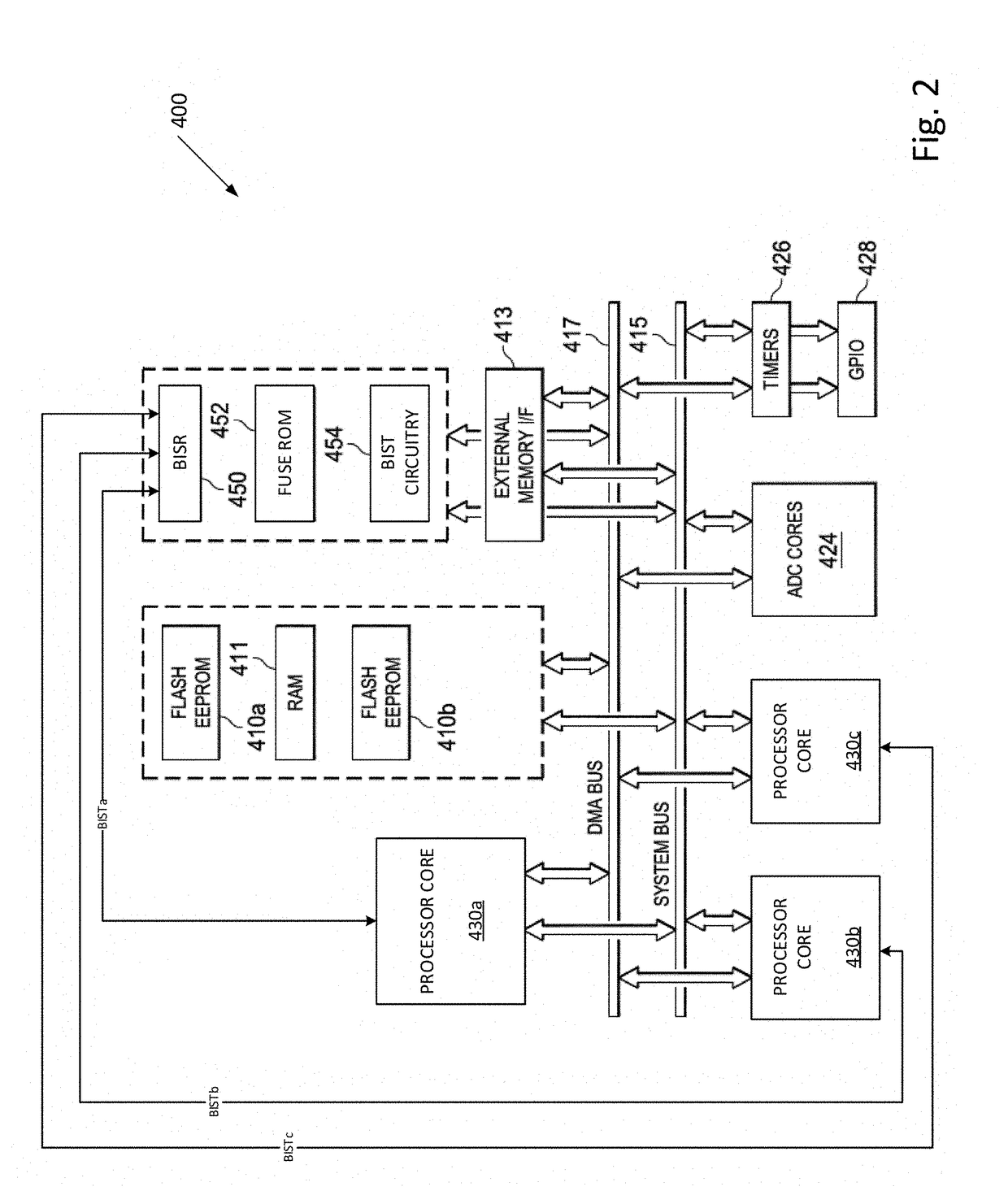Centralized built-in soft-repair architecture for integrated circuits with embedded memories
a technology of embedded memory and soft-repair architecture, which is applied in the direction of fault response, error detection/correction, instruments, etc., can solve the problems of large chip area in the soc that is also the most vulnerable to manufacturing defects, and the embedded memory is not accessible over the system bus, so as to achieve efficient results
- Summary
- Abstract
- Description
- Claims
- Application Information
AI Technical Summary
Benefits of technology
Problems solved by technology
Method used
Image
Examples
Embodiment Construction
[0033]The one or more embodiments described in this specification are implemented into a multiple-core large-scale integrated circuit, such as that suitable as a system-on-a-chip (SoC) or similar device, as it is contemplated that such implementation is particularly advantageous in that context. However, it is also contemplated that concepts of this invention may be beneficially applied to other applications, including general purpose microprocessors, application specific processors, and the like. Accordingly, it is to be understood that the following description is provided by way of example only, and is not intended to limit the true scope of this invention as claimed.
[0034]FIG. 2 illustrates, in block diagram form, the generalized architecture of an example of SoC 400 constructed according to these embodiments. In this example, SoC 400 as shown in FIG. 2 follows the generalized architecture of a modern system-on-a-chip such as in the TDAxx and DRAx families of processors availabl...
PUM
 Login to View More
Login to View More Abstract
Description
Claims
Application Information
 Login to View More
Login to View More - R&D
- Intellectual Property
- Life Sciences
- Materials
- Tech Scout
- Unparalleled Data Quality
- Higher Quality Content
- 60% Fewer Hallucinations
Browse by: Latest US Patents, China's latest patents, Technical Efficacy Thesaurus, Application Domain, Technology Topic, Popular Technical Reports.
© 2025 PatSnap. All rights reserved.Legal|Privacy policy|Modern Slavery Act Transparency Statement|Sitemap|About US| Contact US: help@patsnap.com



